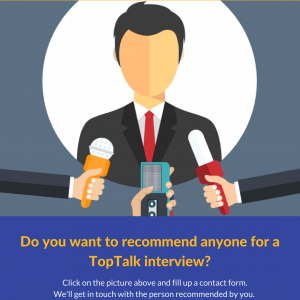 Laura Stevens is a manager in the people analytics service line of Deloitte’s Consulting practice. After graduating summa cum laude her masters in Psychology and Educational Sciences, she successfully finalized her academic Ph.D. research focusing on predictive retention analytics. Making the switch to Deloitte Human Capital consulting, she developed a broad experience in data-driven talent management, with a focus on strategic workforce planning and using data to drive organizational transformation. Her main area of expertise is in Continuous Listening and data-driven employee experience. She has spoken at numerous conferences and published several blogs/articles on Continuous Listening, People Analytics, and Data-Driven employee experience.
Laura Stevens is a manager in the people analytics service line of Deloitte’s Consulting practice. After graduating summa cum laude her masters in Psychology and Educational Sciences, she successfully finalized her academic Ph.D. research focusing on predictive retention analytics. Making the switch to Deloitte Human Capital consulting, she developed a broad experience in data-driven talent management, with a focus on strategic workforce planning and using data to drive organizational transformation. Her main area of expertise is in Continuous Listening and data-driven employee experience. She has spoken at numerous conferences and published several blogs/articles on Continuous Listening, People Analytics, and Data-Driven employee experience.
What are the key aspects of employee performance that are critical to the success of HR Analytics?
Next to the frequently mentioned factors such as availability, quality, consistency and granularity of historical data on employee performance, the most critical aspect in my point in view is the presence of a strategy-driven, clearly operationalized and aligned definition of employee performance. That means: given the specific strategy and challenges of the organization, what exactly is considered as optimal (or non-optimal) employee performance? I still see many HR organizations being rather immature when it comes to the availability of clearly defined KPI’s, goals or objectives – connected to their strategy or transformation objectives. Companies that do have a history or strong measurement culture often suffer from outdated KPI’s which are no longer connected to their new (transformation) objectives.
How can HR Analytics enhance employee performance?
There are multiple ways HR analytics can help to drive employee performance, but I would like to highlight 3 of them in particular. First, HR Analytics can help to identify the key drivers or enablers behind employee performance. That means, helping organizations to understand which environmental, leadership or work-related aspects trigger, nurture or reinforce employee performance. The correct identification of these drivers serves as the basis of actionable analytics, as it helps companies to understand what they can do to drive employee performance in the most impactful way. Obviously, what works for one group of employees may not necessarily be effective for others. By segmenting or clustering the workforce, HR Analytics can lead to a more nuanced understanding of what works for whom under which circumstances. For instance, we found that autonomy and empowerment (drivers) can greatly boost employee performance in certain segments of the workforce, whereas it actually decreases performance in other workforce clusters (depending on the type of work being done). Finally, HR Analytics can be powerful if companies are looking to understand the impact of certain performance-oriented interventions. For those that are interested in reading more about these three HR Analytics applications, I recommend having a look at my article Why HR Analytics is Critical to Employee Experience Success.
What do CEOs/CHROs look for in employee performance analytics?
Almost any CEO/CHRO today is concerned with what they can do to better enable and engage their employees to deliver sustainable high performance, outstanding value to the external customer and to go the extra mile for the organization. And if designed holistically and executed rigorously, employee performance analytics can effectively reinforce their business and bottom-line. Let me give you an example. For most organizations today, improving the customer experience is a top strategic priority. The foundations of such transformations require companies to rewire themselves – with one of the key questions to be addressed is how the workforce will need to respond. Indeed, excellent customer experiences require much more than great products and services. They depend first and foremost on engaged and enabled frontline employees – those who interact with the customers throughout the customer lifecycle. In this case, HR Analytics can help to connect employee performance to the ultimate objective of delivering personalized and delightful customer experiences. It will greatly assist in prioritizing and targeting investments, focusing on enhancing those specific aspects of employee performance that drive most value to the customer. In my article ‘Why Continuous Listening is Critical to Customer Experience Transformations’ I discuss this topic more in depth.
What is missing in terms of employee performance data that could make HR Analytics even more meaningful?
Still too often, organizations are approaching HR analytics as a one-off project, of which the success relies on their currently available people and performance data. That freezes them, because most suffer from poor data quality, particularly when it comes to employee performance data. Understandably, they are afraid that key stakeholders will seriously question the validity of the insights gained. Therefore, our team is increasingly working with organizations in actively building and enriching their data landscape. That means, defining key performance indicators and associated targets and developing methodologies and tooling to capture KPI-relevant data over time in a standardized way across borders and regions. Sure this requires an investment and longer-term view, but it is not an option to stay behind or work with strategy-disconnected, poorly defined or operationalized performance metrics. Employee data is now becoming a critical strategic asset and will increasingly differentiate a successful organization from the pack.
Secondly, most HR organizations still limit their analytical activities to working with descriptive background data, typically found in HR Information Systems. What’s often missing in there are experience data. That means, data that help them to understand how employees experience their interactions with the organization, being it with service delivery or HR help desk, their manager and leadership or peers and colleagues. In the same line, employee engagement data – which reveal the extent to which employees are willing to go the extra mile and get energized by the work they do – are often missing. Mostly, these data sit with numerous third-party survey or application providers, who often limit access to individual experience data. That’s troublesome because we know that employee performance is not only a matter of being able but even more so of being willing and being enabled. Employees need the right mindset, work environment, tools, processes, and information to deliver sustainable performance. Experience data may greatly help in understanding where employees getting “stuck” in their journey or what is preventing them from going the extra mile.
Therefore, I highly recommend organizations to invest in Continuous Listening strategies and programs, which can greatly help in quickly enriching their data landscape – if designed and deployed well. For those who are interested in learning more on how to start, I recommend reading my article ‘The 4 Guiding Principles of a Successful Continuous Listening Program’.
Can HR Analytics play a prescriptive role in helping employee fine-tune performance real-time?
Sure it can. Our team of HR analytics data scientist has worked on productizing HR analytics models which estimate the probability of an individual performing optimally in a certain job. The model also provides actionable recommendations on what can be done to increase those chances. Those recommendations come from analyzing historical information to predict what will happen in the future. The model learns from experience, refining and improving its predictions and recommendations over time. However, enabling next-best-action models such as these requires a few things. Besides an analytical platform with a production environment, it requires a continuous and automatically generated stream of data derived from multiple individual interactions. Whereas a couple of more mature HR analytics organizations are taking their first steps in this exciting journey of continuous, streamlined data collection, integration, and analysis, for most, this still feels like a science-fiction scenario. For those organizations, I would recommend to onboard to the HR analytics and datafication journey soon, as I’m quite convinced that it will soon become a rule rather than an exception.
Other articles posted by Laura Stevens:
Why Data-Driven Employee Experience Should Include a Continuous Listening Strategy
The Number 1 Challenge to Data-driven Employee Experience Success and How to Start Addressing it.
Three basic conditions for Employee Experience success using Data and People Analytics
5 steps to take in the journey towards sustainable People Analytics
